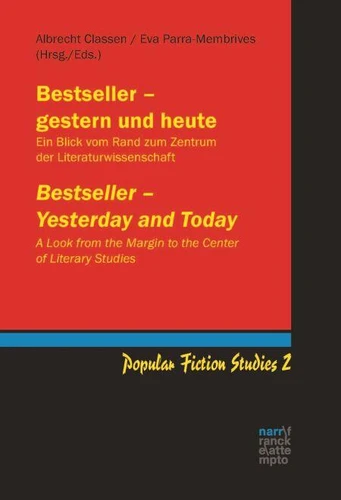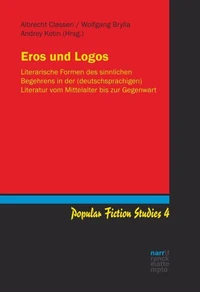Bestseller - gestern und heute / Bestseller - Yesterday and Today. Ein Blick vom Rand zum Zentrum der Literaturwissenschaft / A Look from the Margin to the Center of Literary Studies
Par : ,Formats :
Disponible dans votre compte client Decitre ou Furet du Nord dès validation de votre commande. Le format PDF est :
- Compatible avec une lecture sur My Vivlio (smartphone, tablette, ordinateur)
- Compatible avec une lecture sur liseuses Vivlio
- Pour les liseuses autres que Vivlio, vous devez utiliser le logiciel Adobe Digital Edition. Non compatible avec la lecture sur les liseuses Kindle, Remarkable et Sony
 , qui est-ce ?
, qui est-ce ?Notre partenaire de plateforme de lecture numérique où vous retrouverez l'ensemble de vos ebooks gratuitement
Pour en savoir plus sur nos ebooks, consultez notre aide en ligne ici
- Nombre de pages230
- FormatPDF
- ISBN978-3-8233-7938-6
- EAN9783823379386
- Date de parution18/01/2016
- Protection num.Digital Watermarking
- Taille3 Mo
- Infos supplémentairespdf
- ÉditeurGunter Narr Verlag
Résumé
What is the meaning of a "bestseller" for the history of literature? How do we defi ne it in the fi rst place, and what consequences does the success on the book market have for the literary evaluation of a text? What is the relationship between quantity and quality? Many literary scholars shy away from doing research on "bestsellers", but the question regarding the formation of a literary canon is closely connected with this issue.
How do we evaluate the quality of a text in the fi rst place? The topic of the "bestseller" forces us to examine more closely the relationship between the reading public, literary scholarship, and the book market. On the one hand we have to examine the sales strategies for a book, on the other we have to consider what intentions a literary text might pursue fi rst of all, and how we as literary scholars have to engage with the text critically.
From this results also the challenge to re-investigate the foundation of literary scholarship and to take note of premodern and modern "bestsellers" in their social-historical and mental-historical relevance, without ignoring the textual aesthetics.
How do we evaluate the quality of a text in the fi rst place? The topic of the "bestseller" forces us to examine more closely the relationship between the reading public, literary scholarship, and the book market. On the one hand we have to examine the sales strategies for a book, on the other we have to consider what intentions a literary text might pursue fi rst of all, and how we as literary scholars have to engage with the text critically.
From this results also the challenge to re-investigate the foundation of literary scholarship and to take note of premodern and modern "bestsellers" in their social-historical and mental-historical relevance, without ignoring the textual aesthetics.
What is the meaning of a "bestseller" for the history of literature? How do we defi ne it in the fi rst place, and what consequences does the success on the book market have for the literary evaluation of a text? What is the relationship between quantity and quality? Many literary scholars shy away from doing research on "bestsellers", but the question regarding the formation of a literary canon is closely connected with this issue.
How do we evaluate the quality of a text in the fi rst place? The topic of the "bestseller" forces us to examine more closely the relationship between the reading public, literary scholarship, and the book market. On the one hand we have to examine the sales strategies for a book, on the other we have to consider what intentions a literary text might pursue fi rst of all, and how we as literary scholars have to engage with the text critically.
From this results also the challenge to re-investigate the foundation of literary scholarship and to take note of premodern and modern "bestsellers" in their social-historical and mental-historical relevance, without ignoring the textual aesthetics.
How do we evaluate the quality of a text in the fi rst place? The topic of the "bestseller" forces us to examine more closely the relationship between the reading public, literary scholarship, and the book market. On the one hand we have to examine the sales strategies for a book, on the other we have to consider what intentions a literary text might pursue fi rst of all, and how we as literary scholars have to engage with the text critically.
From this results also the challenge to re-investigate the foundation of literary scholarship and to take note of premodern and modern "bestsellers" in their social-historical and mental-historical relevance, without ignoring the textual aesthetics.




